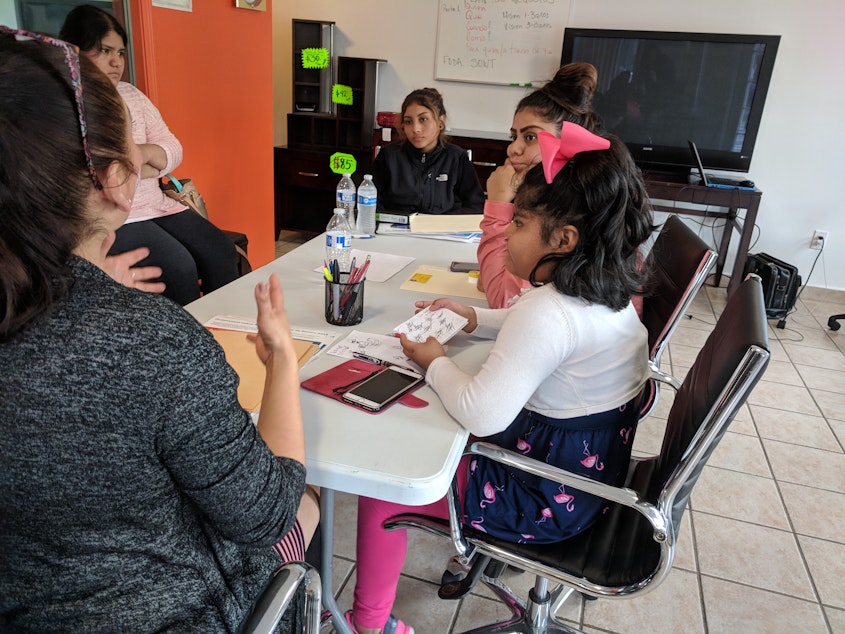Gentrification looms ahead for South Park. These businesses are trying to stay put

Seattle’s South Park neighborhood sits on the bank of the polluted Duwamish river, flanked by industry and split in two by Highway 99.
This is a neighborhood uniquely steeped in Hispanic culture and occupied by people with a deep passion for community.
It’s also a neighborhood staring down the barrel of change.
Right now, South Park is one of the most diverse and affordable areas in the city. But as prices rise, local businesses and residents are feeling the squeeze.
Read More: We photographed Ericka when she was a sex worker. This is her life now “Gentrification is knocking on the door and it doesn’t seem to be going away,” said Pedro Gomez, small business development manager with the City’s Office of Economic Development.South Park is already changing. The median home price has jumped more than 13 percent in the past year, according to Zillow. It now sits just under $400,000.
Read More: Immigrant moms in SeaTac prison 'could hear their children screaming' And the demographics are starting to shift too. About one in three people in this neighborhood are Latino. But data from the American Community Survey shows an increase in the white population in recent years.Trying to outrun displacementThe grumble of jet engines overhead and the rumble of trucks on the street create the soundtrack to this place, with its tree-lined streets and industrial vibe.Unlike some other Seattle neighborhoods, gentrification hasn't hit South Park in full force yet. So Gomez said the city is trying to get ahead of the changes.They’re piloting several programs in the neighborhood. There's one that helps local business owners learn about lease negotiations, one that teaches them business skills, one that helps them save to re-invest in their companies.The city is spending about $130,000 in 2018 to try to help local merchants stay where they are.The programs are new, and the city doesn’t know yet who is using them or if they're working.But these city-run programs aren’t the only resources available.Community members are also getting involved in the effort to prevent displacement and shape the future of their neighborhood.On a recent Saturday, Rocio Arriaga stood in front of a handful of people in South Park’s small business district, teaching a class in rapid Spanish.A slight woman, overflowing with enthusiasm, Arriaga runs a business consulting company in the neighborhood and heads the South Park Merchant’s Association.This class is her attempt to limit the impacts of growth on local Hispanic businesses.Her goal is to help businesses stay in the neighborhood by partnering them with local youth."My point is to teach all these kids the art of doing businesses,” she said.Arriaga said young people learn quickly and are good with technology so they can help local merchants make their operations more efficient.And if they can make some money doing it, it could keep young people away from crime and gangs, Arriaga said. This is her way of tackling two of the neighborhood’s concerns at once – public safety and the rising cost of doing business.Right now, the program is in its infancy, without a long-term funding source and with only a few young people and businesses involved. Arriaga hopes that will change.Excitement, fear of changes aheadAs the relentless march of Seattle growth moves south, Arriaga said many of the local businesses are half excited and half scared.On the one hand, she said the area could use some revitalization.The neighborhood was hit hard when the South Park bridge closed for several years, cutting South Park off from the economic hubs of Boeing and Georgetown on the other side of the Duwamish.The bridge reopened in 2014, but the chilling effect of its closure has lingered."We have some spaces that were in really bad condition,” Arriaga said. “But now some people who have huge businesses, they bought these properties and they are putting new businesses in them and that’s really cool."On the other hand, renovated buildings and new businesses could drive up rents, and that would make it harder for long-time merchants to stay where they are.Still, business owners who are beginning to partner with local youth are hopeful. Reyna Quezeda has had a business in South Park for years. She's had to change it several times to stay afloat.Quezada's business has shifted from a Mexican goods store to a video store and now a health club. Quezada's daughters are part of the youth group learning about business, and she said that will help.Speaking through an interpreter, Quezada said her kids will be able to help her with advertising and growing the business once they learn more. And that's good because she's got some concerns about looming growth in the neighborhood.A rising tide?New businesses have also moved in. Uncle Eddie’s pub is a new addition to the neighborhood, opening early this year.Co-owner Keasa Jones said they want to be a part of the neighborhood. She said they've tried to be respectful and hire locals.At the end of the day, Jones said, they want the same thing as all the businesses that have been in the neighborhood for years. “When the tide rises, all boats float," Jones said. "So for me, to have all of these businesses open all the time, successful, people on the street, South Park being a destination and being a thriving little retail strip here, I mean, that to me would be awesome. I want everybody around us to succeed so that we all can continue to operate,” she said.There’s no perfect model in Seattle for neighborhoods to follow in order to grow without displacing their long-term residents and businesses.But in South Park, the community is getting involved on the front end.“I think there’s still a chance to save certain places like South Park,” said Pedro Gomez with the city.
